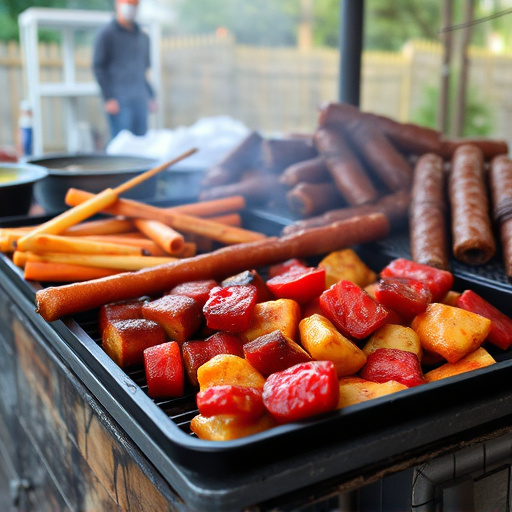Selecting the right cut of beef or chicken, mastering marination techniques with balanced spices, properly dehydrating meat to 55-60% of its original weight, controlling cooking temperatures and times, maintaining consistent batch sizes, storing jerky in airtight containers, avoiding overcooking and using quality ingredients, and experimenting with creative flavor additions are key steps to crafting a perfect BBQ jerky recipe.
“Achieve perfect BBQ jerky texture with our comprehensive guide. From selecting the right cut of meat—essential for tender jerky—to mastering marinades for optimal seasoning, we cover every step. Learn effective dehydration techniques and understand temperature control for consistent results. Discover batch sizing, timing, packaging tips, and how to avoid common mistakes. Plus, explore creative flavor additions to personalize your BBQ jerky recipe. Elevate your jerky game today!”
- Selecting the Right Cut of Meat: The Foundation for Tender Jerky
- Marinade Mastery: Seasoning Your Meat to Perfection
- Dehydration Techniques: Achieving the Ideal Texture Step by Step
- Temperature Control: The Science Behind Cooking Jerky
- Batch Sizing and Timing: Ensuring Consistent Results
- Packaging and Storage: Preserving Freshness for Later Enjoyment
- Common Mistakes to Avoid: Tips for BBQ Jerky Success
- Creative Flavor Additions: Personalizing Your Jerky Experience
Selecting the Right Cut of Meat: The Foundation for Tender Jerky
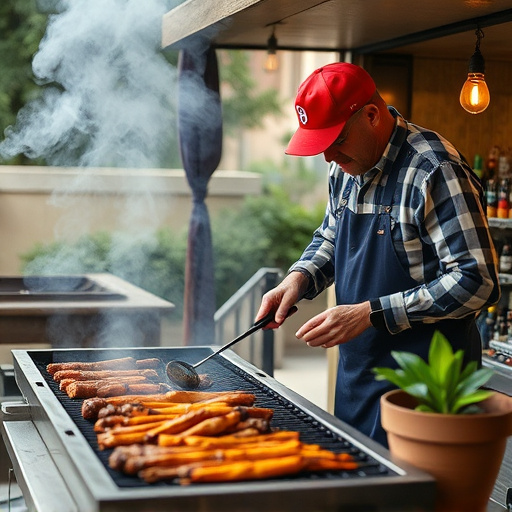
When crafting your ideal BBQ jerky, the first step begins with choosing the right cut of meat. Opting for lean, high-quality protein is key; beef round or brisket are popular choices due to their natural tenderness when properly prepared. This initial selection sets the foundation for achieving that perfect, mouthwatering texture that jerky lovers crave.
Each cut has unique characteristics, affecting the final product’s consistency. For instance, brisket offers a delicate flavor and tends to become incredibly tender when marinated and dehydrated correctly. Round steak, though slightly tougher, can still be transformed into delectable jerky with the right techniques, ensuring your BBQ jerky recipe turns out perfectly every time.
Marinade Mastery: Seasoning Your Meat to Perfection
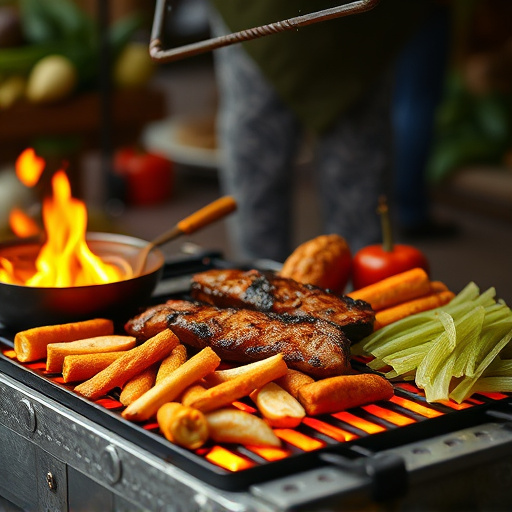
Achieving the perfect BBQ jerky texture starts with mastering your marinade. A well-crafted BBQ jerky recipe is the foundation for deliciously tender and flavorful meat. The key to success lies in balancing acidity, salt, and spices to break down collagen and tenderize the muscle fibers. Acetic acid, found in vinegar or lemon juice, works wonders in this regard, but be mindful not to overdo it; too much can make your jerky sour.
When seasoning your meat for a BBQ jerky recipe, consider using a combination of coarse salt (like kosher salt) and coarsely ground black pepper for maximum penetration. Add smoky flavor with paprika or liquid smoke, and incorporate spices like garlic powder, onion powder, chili powder, or cayenne pepper to suit your preferred heat level. Remember, the longer your meat marinates, the more intense the flavors will become—so adjust your time accordingly for a perfectly seasoned and tender BBQ jerky experience.
Dehydration Techniques: Achieving the Ideal Texture Step by Step
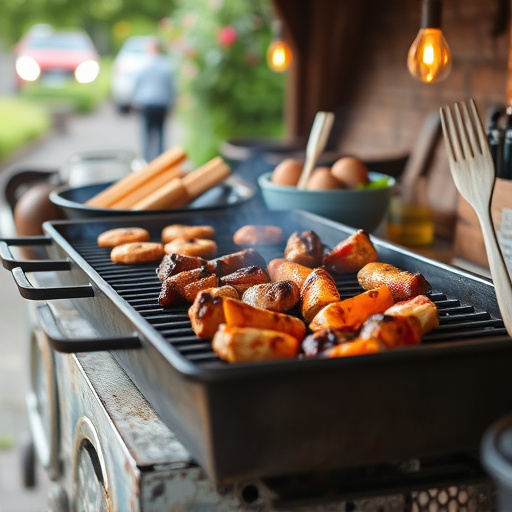
To achieve the perfect texture for your BBQ jerky recipe, dehydration techniques play a pivotal role. The process begins by thinly slicing your meat – beef or chicken are popular choices – to ensure even drying and optimal flavor penetration during dehydration. Next, marinate your slices in a combination of your favorite BBQ sauce and essential spices like garlic, paprika, salt, and pepper. This step not only enhances taste but also helps preserve the meat.
After marinating, it’s time for the dehydration process. Using an oven set to low temperature (around 170°F or 77°C) is a common method, allowing for slow and consistent drying. Alternatively, food dehydrators offer precise control over temperature and humidity, ensuring your jerky doesn’t become too dry or tough. Dehydrate the meat slices until they reach about 55% to 60% of their original weight – this usually takes several hours – resulting in a tender, crispy texture that’s perfect for snacking.
Temperature Control: The Science Behind Cooking Jerky
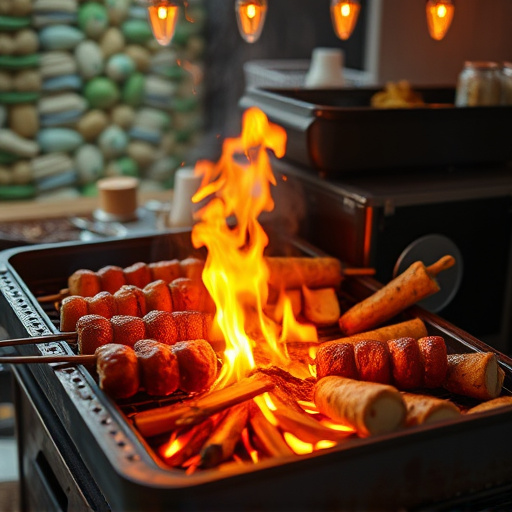
Temperature control is a crucial aspect in achieving the perfect BBQ jerky texture, and understanding the science behind it can elevate your DIY jerky game. The process of making jerky involves denaturing proteins in the meat through heat application. This structural change breaks down muscle fibers, resulting in the tender, chewy texture we love. For an optimal BBQ jerky recipe, the key lies in maintaining a consistent and precise temperature.
Different cuts of meat will have varying fat contents and protein structures, which affect cooking times and temperatures. Using a meat thermometer is essential to monitor internal temperatures, ensuring the meat is cooked evenly without overcooking or drying out the jerky. Typically, for beef jerky, you’ll want to cook it to an internal temperature of 160°F (71°C) to kill any potential bacteria and achieve that desirable, chewy texture.
Batch Sizing and Timing: Ensuring Consistent Results
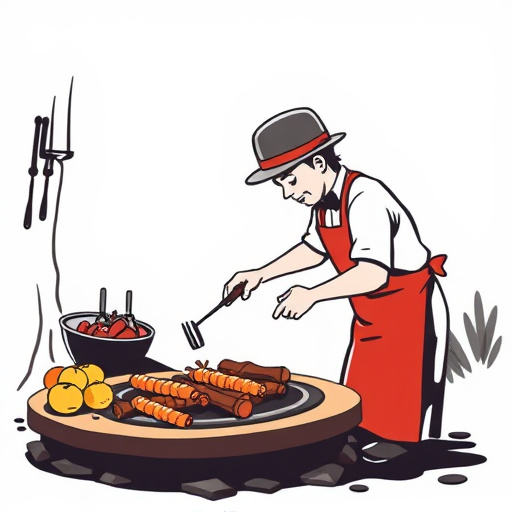
Achieving consistent, perfect BBQ jerky texture requires careful consideration of batch sizing and timing. When preparing a BBQ jerky recipe, it’s crucial to maintain ratios of ingredients for optimal results. Smaller batches allow for more precise control over cooking time and temperature, ensuring every piece of meat cooks evenly. Larger batches, while feasible, may require adjustments in timing and stirring to prevent overcooking or under-seasoning some pieces.
Timing plays a significant role in developing the desired texture. The marination step is vital, allowing flavors to penetrate the meat. After drying, slow cooking at a low temperature for an extended period ensures the meat becomes tender and shrinks uniformly, resulting in that coveted jerky texture. Consistency in batch sizes aids in maintaining this precise timing, ensuring every batch of your BBQ jerky recipe turns out perfectly.
Packaging and Storage: Preserving Freshness for Later Enjoyment
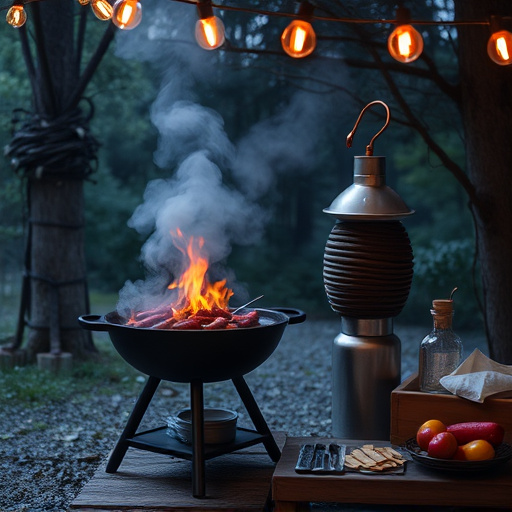
After crafting your perfect BBQ jerky, proper packaging and storage are key to preserving its delicious texture and flavor for later enjoyment. Airtight containers or vacuum-sealed bags are ideal for storing jerky as they prevent exposure to moisture, which can cause spoilage. Label these containers with the date of preparation to keep track of freshness. Since jerky is a dried meat product, it has a long shelf life under optimal conditions. However, maintain cool and dry temperatures to slow down potential bacterial growth. Keep your BBQ jerky away from direct sunlight and heat sources to avoid degradation of flavors and textures. This thoughtful approach ensures that each bite of your homemade BBQ jerky recipe remains as mouthwatering as the day it was made, ready for spontaneous snacking sessions or camping trips.
Common Mistakes to Avoid: Tips for BBQ Jerky Success

Achieving the perfect BBQ jerky texture requires attention to detail and an understanding of common pitfalls. One of the biggest mistakes people make is undercooking the meat. It’s crucial to cook the jerky thoroughly, allowing any excess moisture to evaporate, which results in a chewy, not tough, texture. Using too much salt or incorrect seasoning blends can also negatively impact the taste and overall quality. Always opt for high-quality ingredients, especially your BBQ sauce—store-bought varieties may contain preservatives that affect the final product.
Another mistake to avoid is not marinating the meat properly. Adequate marination time allows flavors to penetrate deeply into the muscle fibers, enhancing the overall BBQ jerky recipe. Lastly, don’t rush the drying process. Allowing the jerky to air dry correctly ensures a crispy finish; this step is as important as the cooking itself in achieving that perfect, mouthwatering texture.
Creative Flavor Additions: Personalizing Your Jerky Experience
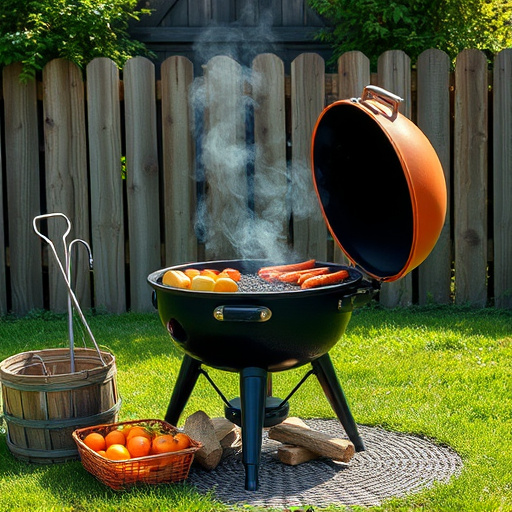
Take your BBQ jerky recipe to the next level by experimenting with creative flavor additions. Beyond the classic combinations, explore unique blends that cater to your taste buds. Spices like smoked paprika, cayenne pepper, and chili powder can add a kick, while dried herbs such as rosemary, thyme, or oregano lend earthy, aromatic notes. For a sweet twist, incorporate brown sugar, maple syrup, or even barbecue sauce during the marinating process.
Don’t be afraid to get adventurous with ingredients like citrus zest (lemon or orange), garlic powder, onion powder, or even coffee grounds for an unexpected depth of flavor. Personalize your BBQ jerky recipe by blending these additions according to your preferences. The beauty lies in tailoring each batch to satisfy individual tastes, making every snack a delightful journey of discovery.
